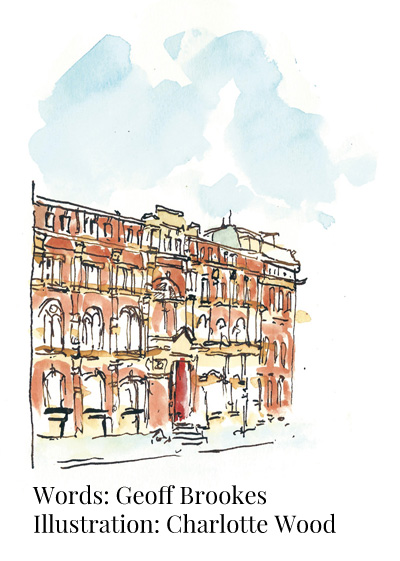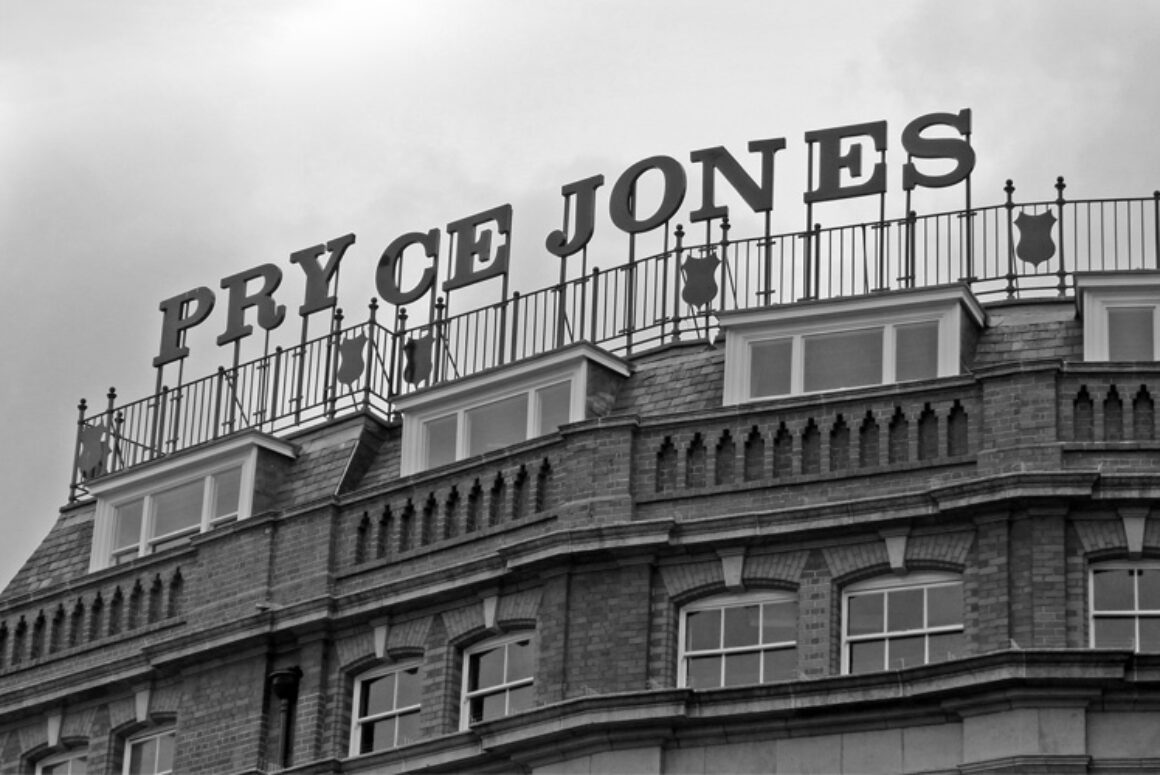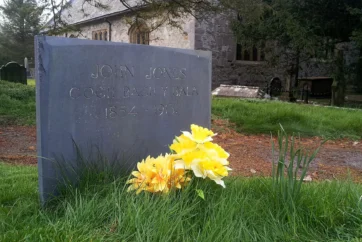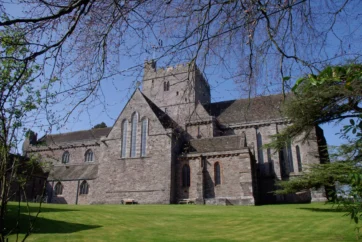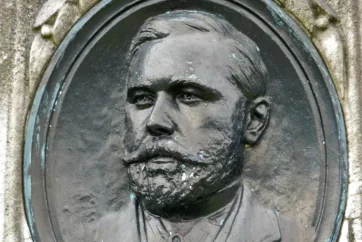![]()
They are such wonderful buildings and they dominate Newtown in Powys. Two tall, distinctive, sturdy red brick temples to Commerce. The Royal Welsh Warehouse.
The story behind the buildings is one that has touched all our lives. It is a story of an entrepreneur who transformed his life, his town and built the future. It is the story of Sir Pryce Pryce-Jones.
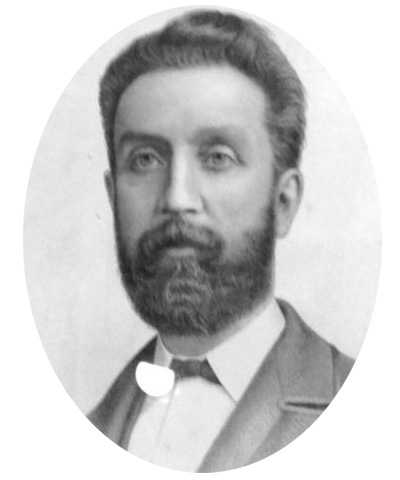
Pryce Jones, as he was christened in 1834, was apprenticed at the age of 12 to a draper, John Davies, on the Cross in Newtown. He soon discovered that it was a profession that suited him. In 1859, when he was 25, he opened his own small shop just off Broad Street and traded under his own name. It was from here that he changed forever the shopping experience of the world. He developed a mail order business, beginning in a small way by sending out patterns and stock lists. He knew his market intimately. He knew that there was an untapped market out there in isolated rural locations like mid Wales, where shops were sometimes occasional.
Pryce Jones went on to link distribution to production by arranging for local woollen manufacturers and merchants to supply goods to meet the orders he received. Simple but revolutionary. He was always eager to extend the business and he had a gift for publicity. In 1862 he received an order from Florence Nightingale and immediately began using her name as an endorsement. Queen Victoria and members of European royalty – the Empress of Austria and the queens of Denmark and Naples – soon became customers. In capital letters across the bottom of one of his leaflets he proudly boasted that his company was:
MAKER OF THE EMBROIDERED PETTICOAT PRESENTED TO HER ROYAL HIGHNESS THE PRINCESS OF WALES.
But one product more than any other came to define his business – a rug.
The Euklisia rug was exported around the world. Really, it was a combination of rug, shawl and inflatable pillow. It was the very first prototype of the sleeping bag, very popular in the German army during the Franco-Prussian war. It consisted of a woollen blanket with a pocket at the top for an inflatable, vulcanised rubber pillow. You folded the blanket over and fastened it together. It was exported all over the world to places like the Congo and the Australian outback. Sadly, no examples survive.
Pryce Jones had a contract to provide 60,000 rugs to the Russian army, to be supplied at the rate of 6,000 rugs a week. They were used during the Russo-Turkish War at the siege of Plevna in 1877. However, when the city fell, the Russians cancelled the rest of their order, leaving Jones with 17,000 undelivered rugs. He quickly added the Euklisia rug to his catalogue and sold it as inexpensive bedding for charities working with the poor.
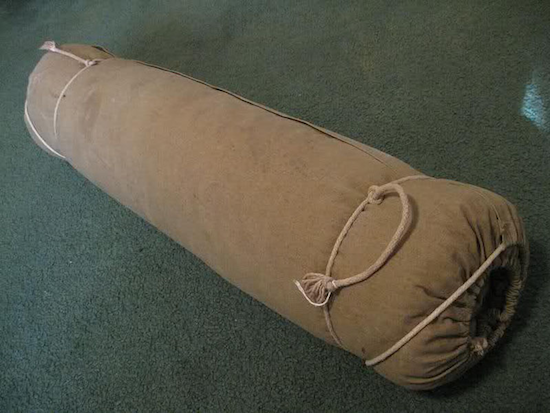
‘Pryce Jones has the honour of calling the special attention of Ladies to the following.
He has on hand seventeen thousand Brown Army Blankets (fitted with an air tight pillow) which were expressly made for the Russian Army. P.J. proposes to clear off the lot at a great sacrifice – he intends removing the air tight pillows and sewing up the slot, the space may, if required, be refilled with a pillow of feathers, wool, cotton or straw, and may in this manner, be utilized for the poor – being a bed and blanket combined.
As P.J. offers these goods under cost of production, he solicits and hopes to receive early orders.’
He was knighted in 1887 for his services to commerce and he expanded his name.
In 1879 Pryce Jones built new spacious premises. The Royal Welsh Warehouse, which we can still see today, was carefully sited next to the railway station. The London and North Western Railway Company provided three dedicated parcel wagons to carry packages for Pryce Jones, and these were dropped off along the route at Shrewsbury, Stafford, Rugby, Willesden and Euston. Junctions with other lines ensured that an order could reach almost every part of England the following day. Soon he was receiving 2,000 orders per day and he built a second warehouse, Agriculture House, connected to the first by a bridge.
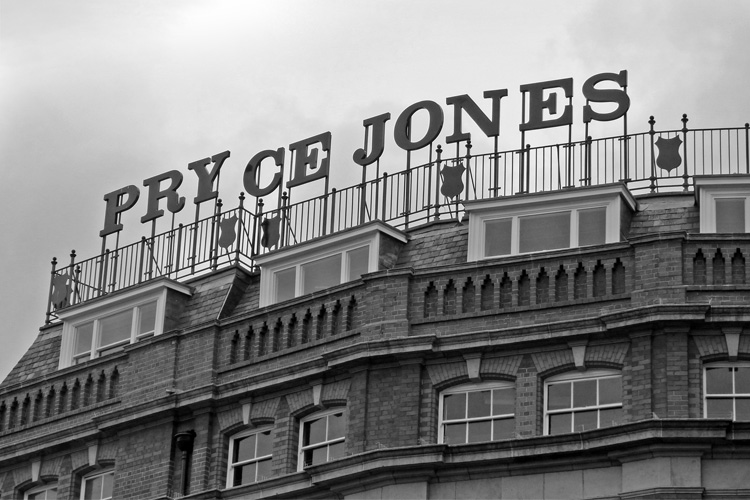
He was always full of commercial ideas.
He is believed to be the first person in Wales to install a telephone to link his home, at Dolerw, to his business premises. In 1882, while Pryce Jones was campaigning to become Conservative MP for the Montgomery Boroughs, he met the Postmaster General and suggested to him the idea of developing a parcel service. A letter post already existed but parcels had to be sent by road and rail carriers, sometimes at great expense – obviously an important consideration for a mail order operation. His idea was adopted and the Parcel Post was developed as a result. The Royal Welsh Warehouse acquired its own printing press and in 1890 produced its first illustrated catalogue to replace the simple price lists that had been sent out previously. In 1901 Pryce-Jones added his own post office to the Royal Welsh Warehouse, to manage the huge number of packages sent all over the world from Newtown.
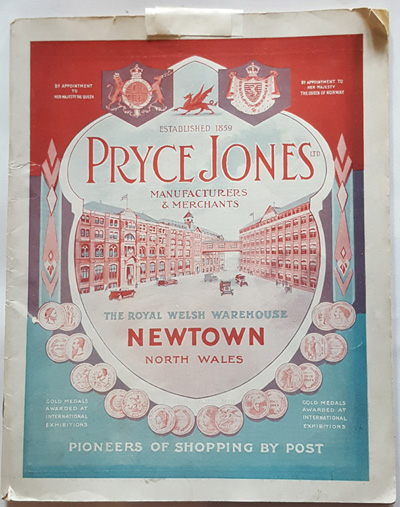
He was knighted in 1887 for his services to commerce and he expanded his name, rather as he had expanded his business, to become Sir Pryce Pryce-Jones. He served as MP from 1885-6 but for many he was never anything but a draper’s assistant and as a politician he was, to some, a figure of fun. He became High Sheriff for Montgomeryshire in 1891 but as a conservative he faced hostility from local liberals. In 1892 he visited Llanidloes and there were disturbances. Stones were thrown. There were scuffles as he got into his train carriage.
‘He continued to brandish his stick about, and struck a little girl who was standing near a severe blow just above the eye which made the blood flow. This act enraged the crowd so much that their attitude towards him became very hostile and he came in for some rather rough treatment.’ [Montgomeryshire Echo, 1892]
His hat was taken and carried through the streets on a clothes prop and burnt.
But that is not what he is remembered for.
He was a man who went from shop assistant to multi-millionaire, responsible for 4,000 workers and 250,000 customers. Those two towering buildings in Newtown symbolise his huge achievements. They are rather forlorn now. The beautiful panels showing the cities where their products were exhibited are clean and bright and above the door there are panels showing ships and trains. But its time has gone. Inside, there are ornate features, a marvellous staircase, handrails, stained glass windows. None of this is necessary at all; but it reflects pride in achievement, the idea that commerce can be proud and elegant. Agriculture House has a completely unnecessary but lovely wind vane.
There are still businesses within the building, struggling valiantly, but it is very silent place, with an air of desperation. There have been attempts to keep it alive, as the Pryce Jones Retail Centre. But whilst it is still directly outside the train station, it is separated from the main part of the town by the busy A489 and you need a compelling reason to cross that! Unless a big name retail store moves in, the building will forever be on the wrong side of the road. The world has moved on, and most of it seems to be moving on the A489.
Pryce-Jones died in 1920 at the age of 85, when his business was still reasonably intact. It suffered in the Great Depression and was eventually taken over by another mail order business.
Pryce-Jones made a huge contribution to Newtown, reviving the local woollen industry. He pioneered new methods of trading, which are now taken for granted. What he created became a global phenomenon and a way of life.
His resting place acknowledges none of this. It is marked by a distinguished obelisk on the right-hand side in the grounds of All Saints Church, Llanllwchaiarn, which he built on the other side of the river Severn. If you didn’t know, you would say that this was the grave of some forgotten local worthy. But it is the resting place of a man who changed the world.
